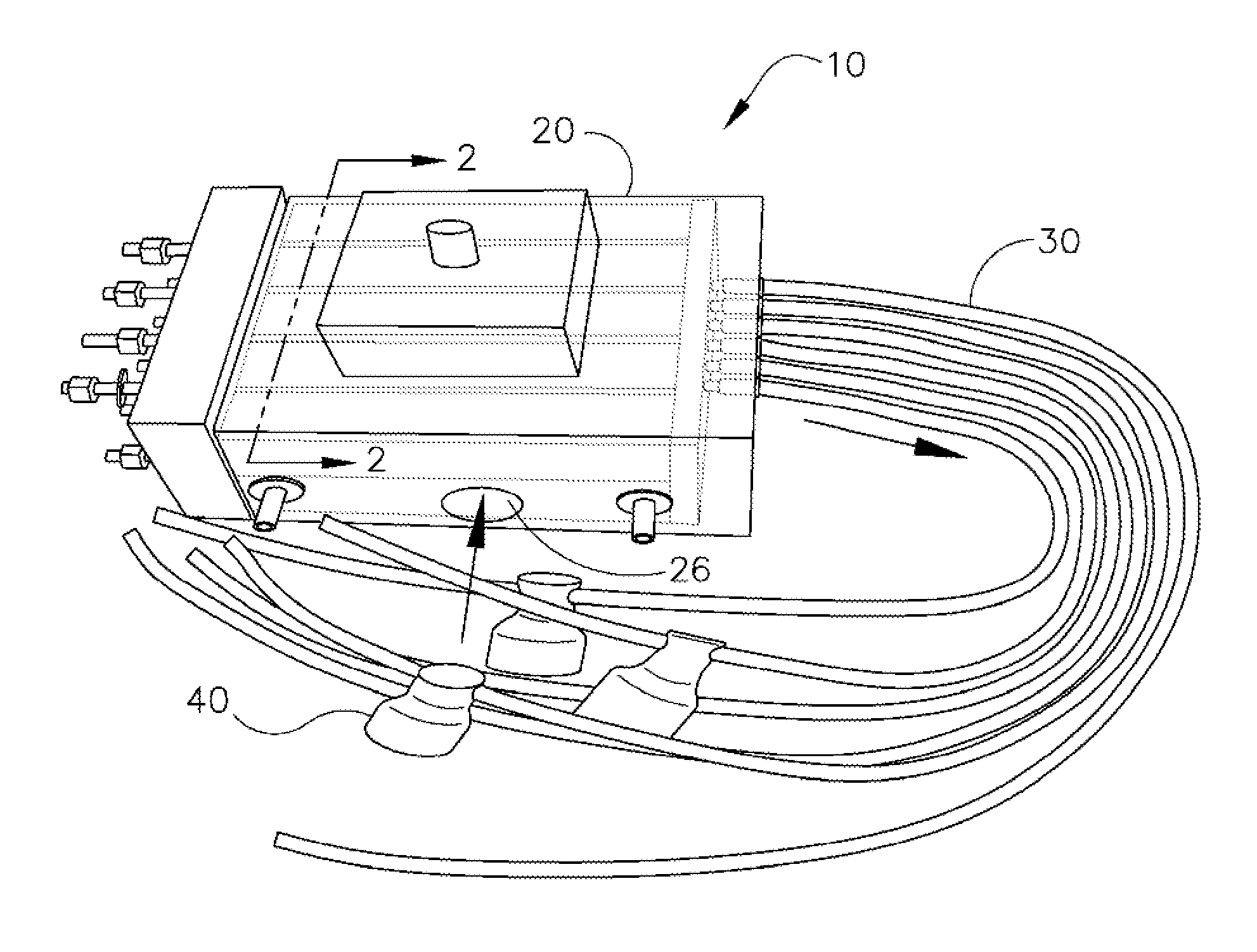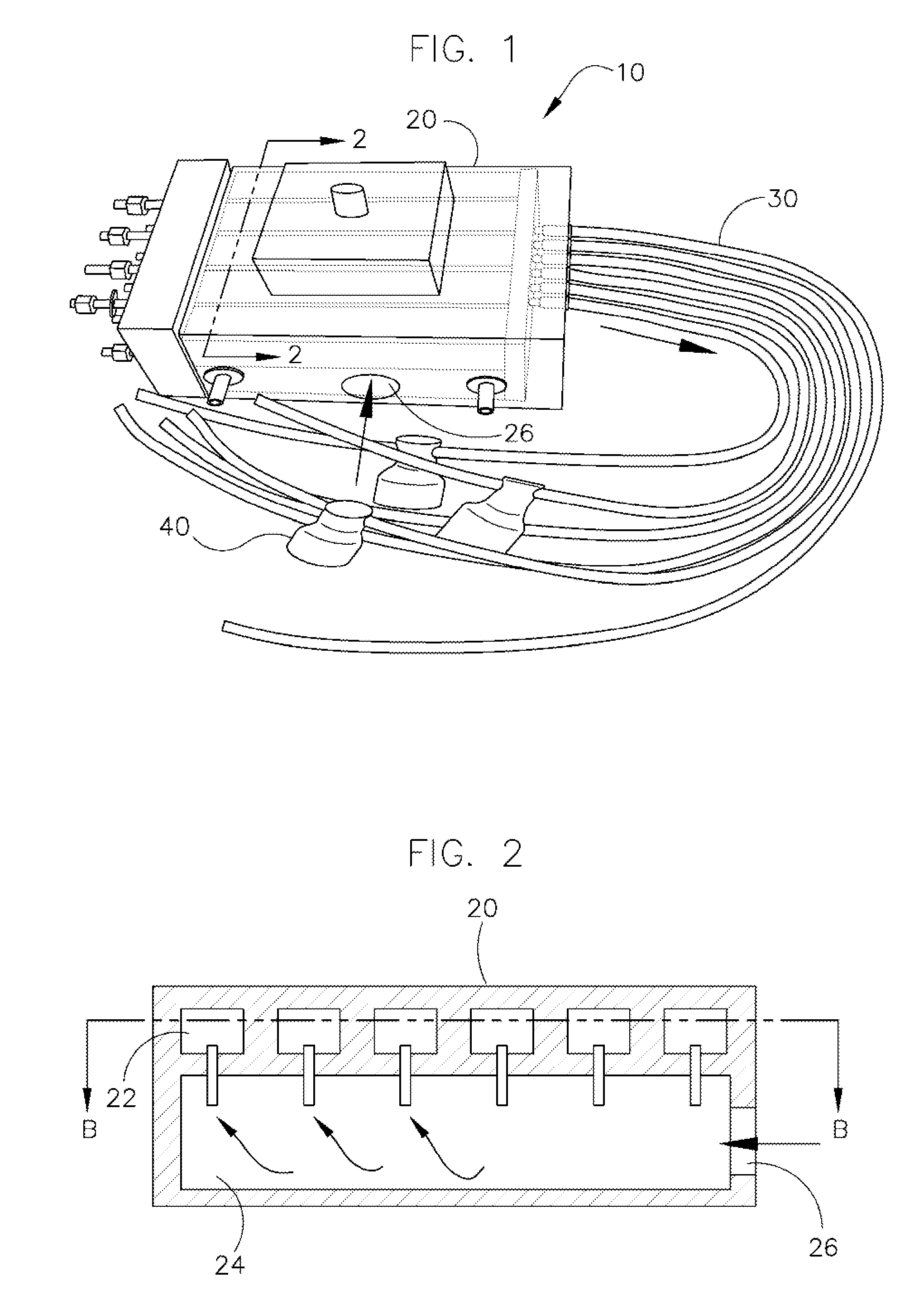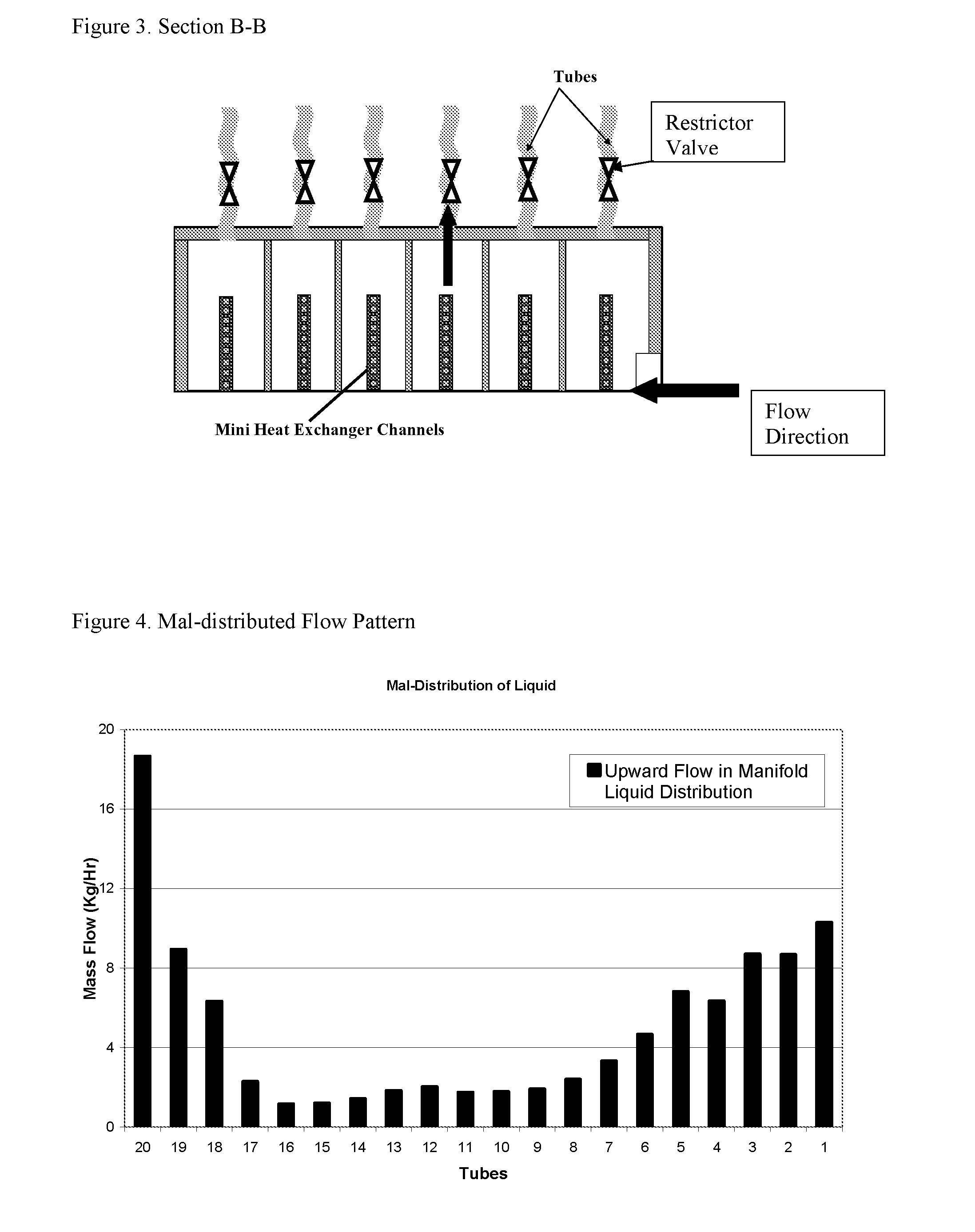Heat transfer apparatus and method
a technology of heat exchange apparatus and heat exchange method, which is applied in the direction of lighting and heating apparatus, water supply installation, instruments, etc., can solve the problems of not being able to be easily accessible and adjusted, and achieve the effect of improving heat exchange efficiency, more efficient heat transfer, and improving heat transfer efficiency
- Summary
- Abstract
- Description
- Claims
- Application Information
AI Technical Summary
Benefits of technology
Problems solved by technology
Method used
Image
Examples
Embodiment Construction
[0029]As required, several detailed embodiments of the present inventive concept are disclosed herein; however, it is to be understood that the disclosed embodiments are merely exemplary of the principles of the inventive concept, which may be embodied in various forms. Therefore, specific structural and functional details disclosed herein are not to be interpreted as limiting, but merely as a basis for the claims and as a representative basis for teaching one skilled in the art to variously employ the present inventive concept in virtually any appropriately detailed structure.
[0030]Referring to FIG. 1, a heat transfer apparatus of one embodiment of the instant invention is shown. The apparatus of FIG. 1 includes a manifold and six tubes extending from the manifold. Some of the tubes include a tube restrictor valve.
[0031]Restricting the tubes improves the uniformity of the mass distribution between heat exchanger tubes. This was demonstrated experimentally as is discussed in further...
PUM
 Login to View More
Login to View More Abstract
Description
Claims
Application Information
 Login to View More
Login to View More - R&D
- Intellectual Property
- Life Sciences
- Materials
- Tech Scout
- Unparalleled Data Quality
- Higher Quality Content
- 60% Fewer Hallucinations
Browse by: Latest US Patents, China's latest patents, Technical Efficacy Thesaurus, Application Domain, Technology Topic, Popular Technical Reports.
© 2025 PatSnap. All rights reserved.Legal|Privacy policy|Modern Slavery Act Transparency Statement|Sitemap|About US| Contact US: help@patsnap.com



